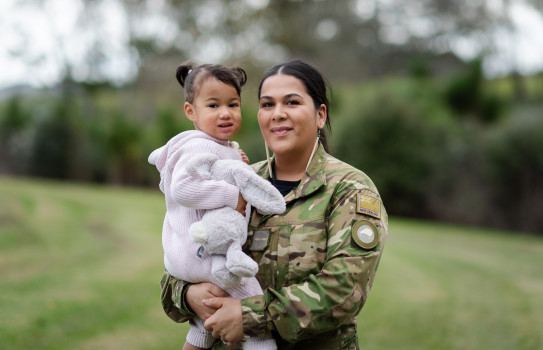
Keeping skills alive in transfer to Reserve Force
05 July 2024
Unfortunately you are viewing this website on an outdated browser which does not support the necessary features for us to provide an adequate experience. Please switch to a modern browser such as latest version of Google Chrome, Mozilla Firefox, Apple Safari or Microsoft Edge.
Ngā mihi nui
Per ardua ad astra - through adversity to the stars.
The Air Force's motto strikes a deeper meaning during Māori New Year, Matariki. Rituals of past generations are celebrated and new traditions for the next generations are created. We listen to stories of past and present Matariki celebrations.
Matua Hemi Te Peeti, Ngāti Raukawa ki te Tonga, is the Air Force's new kaumatua and brings a wealth of knowledge and experience to the role.
"I was part of the kaumātua for the Army as well, so it's a role I'm accustomed to. I'm hoping to help with the cultural aspects relating to tikanga and kawa (Mãori protocol and etiquette). I'd like to help with some programmes on a bicultural level, in terms of representing te tiriti the best way I can, and supporting wherever I can."
Matua Hemi says there is a connection between the Air Force and Matariki in the way the Matariki constellation works with the wider context of the universe.
"Matariki is only one part of a whole constellation family. For Matariki to be able to represent itself for what it is today for Māori people, it takes the wider view to create the importance of the stance within the stars.
"I think it's a bit like the Air Force, it requires the different branches of the Air Force to create the main part of that body to work well. Matariki is about unity, togetherness, about memory and believing in people and skills taught. It's also about how we manage ourselves in terms of the environment we live in and how well we work with it and to look after it in the best way we can."
Matua Hemi Te Peeti, Ngāti Raukawa ki te Tonga
This year during Matariki, Matua Hemi will be giving a talk about the history of the celebration.
"So I talk about the whakapapa of the stars, the stories associated with them and the importance of understanding the environment we work and live with."
He also has his own traditions he shares with his children.
"Matariki for me is all about the environment, so I tell my children if they want to live well in this world, you've got to look after what we have.
"I'm looking forward to doing the role in the Air Force and having that ability to share what I know with everyone there. The future looks promising for us all."

Leading Aircraftman Kaea Preston and her daughter, Ahi, Te Ᾱti Awa,
Ground Support Equipment technician Leading Aircraftman (LAC) Kaea Preston, Te Ᾱti Awa, said for her, Matariki is a celebration and recognition of the year that's past and looking forward to the year ahead.
Mother to two-year-old Ahi, LAC Preston said for the past year she is grateful to have been able to watch her daughter thrive.
"I've spent more time with my family in the past year so that's more to do with Matariki, the mother stars and bringing people together. My family includes my friends who are in Auckland."
She has spent some time learning about Matariki and the traditions it brings.
"This year I will bring to prominence Matariki traditions for my daughter as she grows up. I want to give her all the knowledge that I didn't have around Matariki and pass it on to her so she can grow up with the more traditional aspects and appreciation for why we look at the stars and what they mean.
"My intention for this Matariki is to try to give thanks to the stars in regards to cooking kai that shows gratitude to the stars. I'd like to make kai that represents each whetū (star) and as it cooks allow the steam to be our gratitude to the stars for bringing us this kai."
Each star represents either kai or an aspect of taiao (nature), for example the star Tupuānuku, which represents food that grows within the soil, like potatoes or kūmara, LAC Preston said.
"It's about being able to get the kai that represents each star and releasing the steam into the sky as a way of giving thanks to them. I value traditions a lot and it's setting the tone for my child and hopefully she can pass it along to hers."